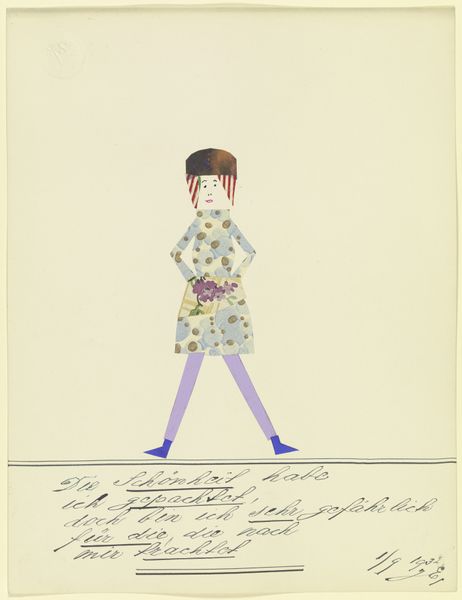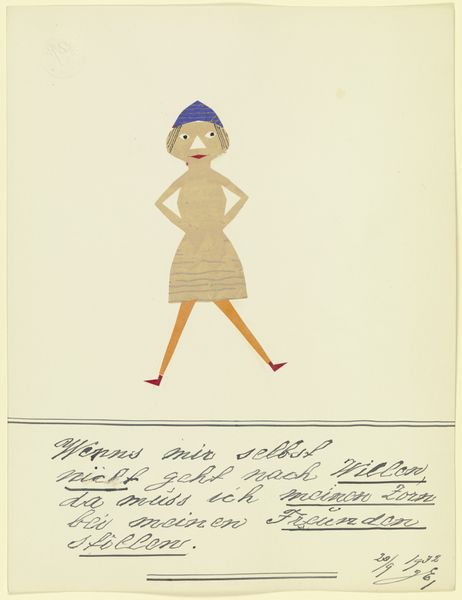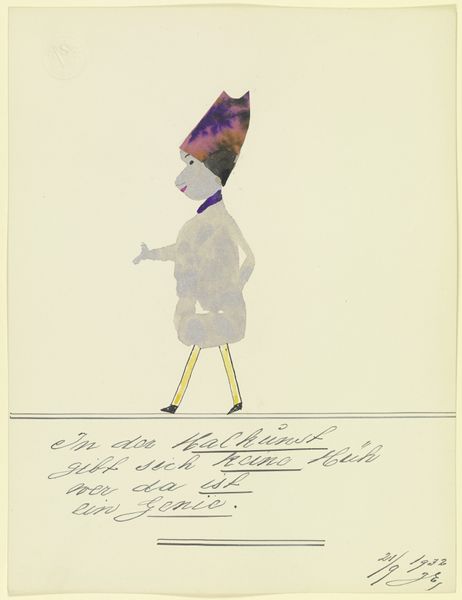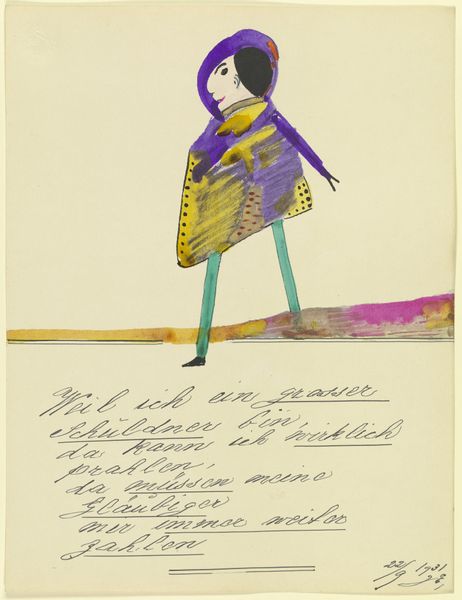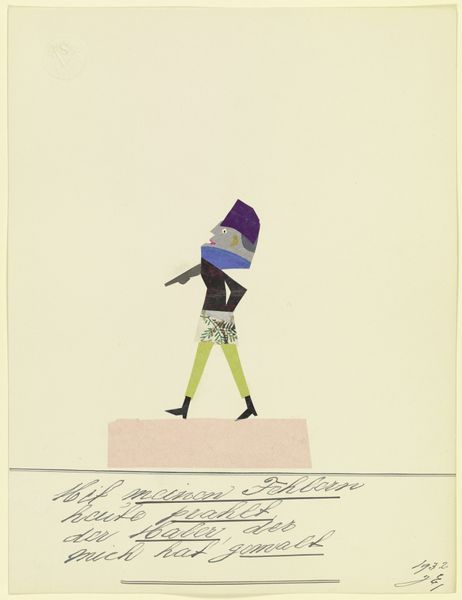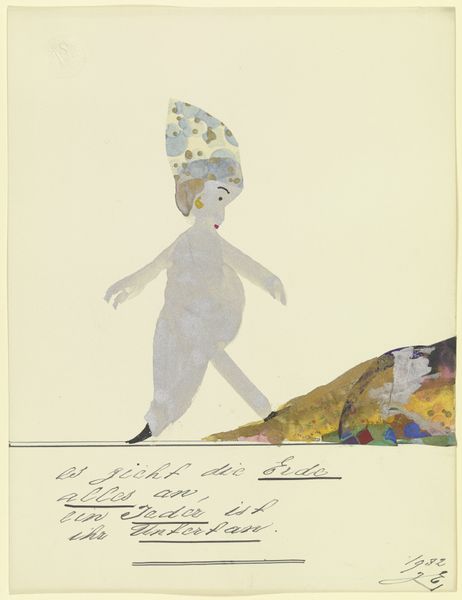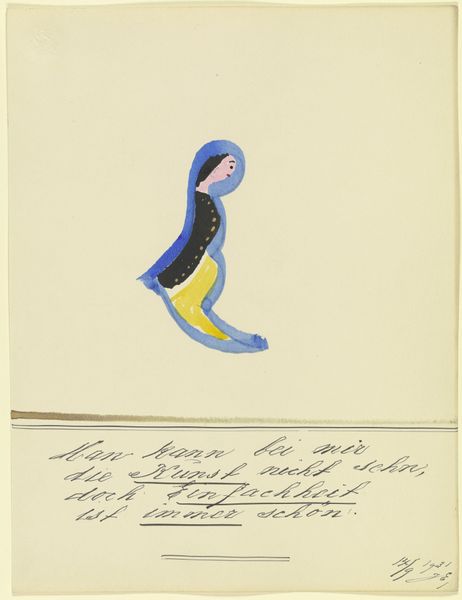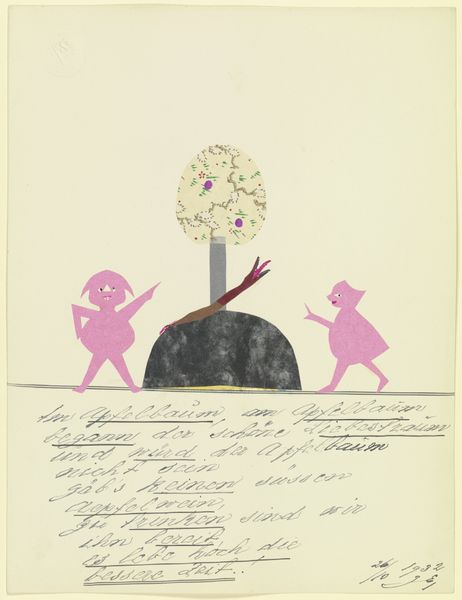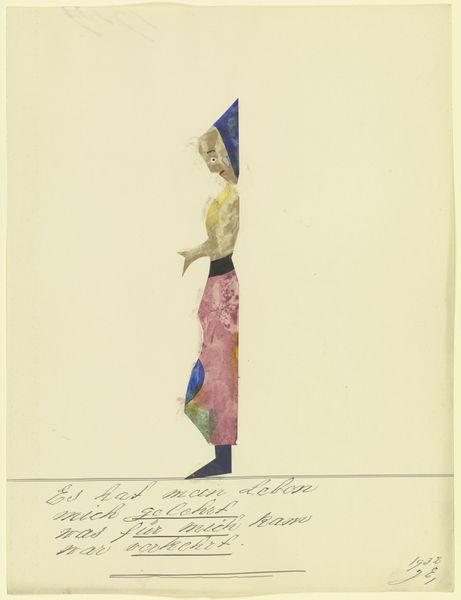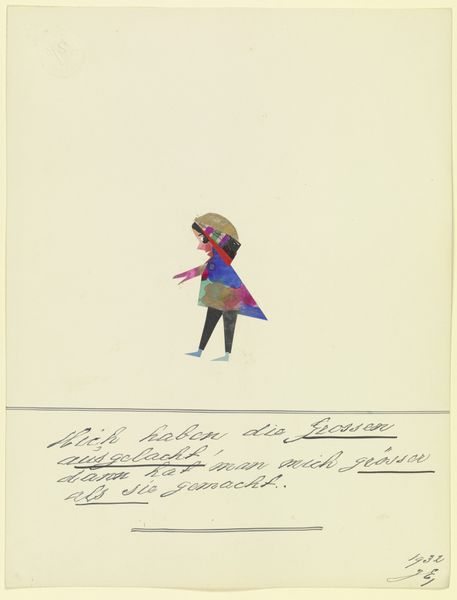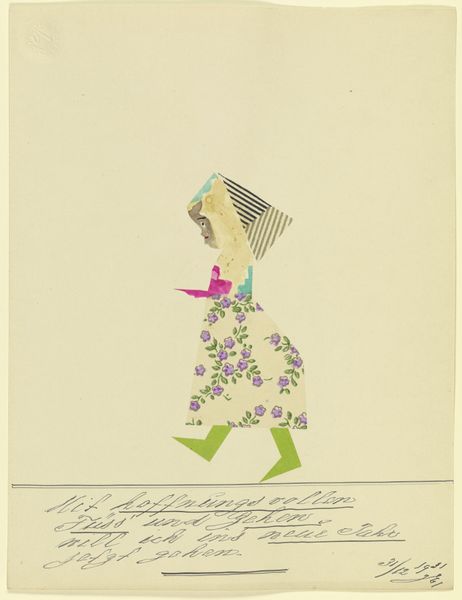
Copyright: Public Domain
Curator: We’re standing before John Elsas’s 1932 artwork, “17554 ('Weil mein Bild ist modern …')”, a collage that includes gouache, ink, and paper elements. What strikes you immediately? Editor: The colours, definitely. It feels like children's book illustration, yet there’s something unsettling in its construction. What paper has the artist selected? Is there any mass-produced source material mixed with individual drawings? Curator: Absolutely, the playful simplicity clashes with the work’s historical context. Elsas created this piece during a time of great social upheaval. As a Jewish artist working in Germany in the 1930s, his identity was inherently political. The text below the image says something interesting as well… Editor: "Because my picture is modern, the world likes me." It’s ironic and revealing when considering the political climate and materials used by Elsas. Let's look at the process of collage, of piecing together scraps. It's not just about the image, but about repurposing pre-existing materials into a completely different visual narrative. Curator: Precisely. The materials signal a modern subjectivity pieced together from societal fragments. His bold use of figuration set against modernist aesthetics speaks to the ways in which personal identity becomes a stage for societal pressures. I'd be interested to see how gender and identity were performed by the artist through material. Editor: And the labor itself becomes apparent through the cut and paste assemblage. The edges of each piece of paper are visible and not always neatly aligned, underscoring the artificiality and deliberate act of construction. I also would question whether the title's use of 'modern' meant merely new art, or something else…perhaps a sly social commentary through means of production, rather than simple form or colour. Curator: That question is key. This layering, both physically and metaphorically, invites us to interrogate what “modern” meant for someone like Elsas, forced to confront both aesthetic expectations and increasingly dangerous social realities. I see his self-representation as a radical act. Editor: I’d also agree that the self-conscious materiality and construction are indeed defiant, turning what may seem as "craft" into a forceful personal statement and means of resistance. Curator: Elsas reminds us how intertwined identity, history, and artistic expression become, particularly in moments of crisis. Editor: He is inviting us to appreciate art as the conscious product of making that’s in constant dialogue with the forces, tools, and politics of material production.
Comments
No comments
Be the first to comment and join the conversation on the ultimate creative platform.
